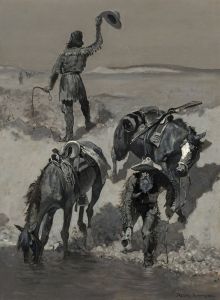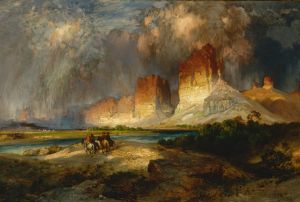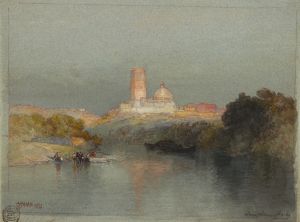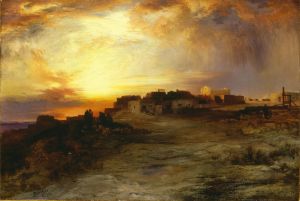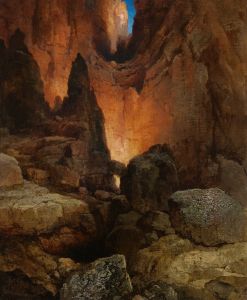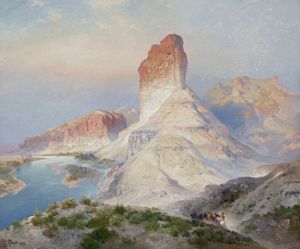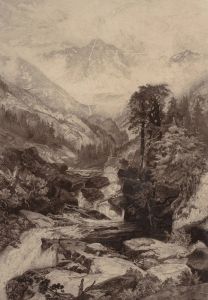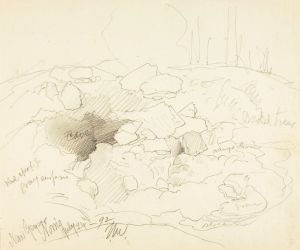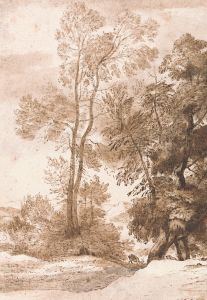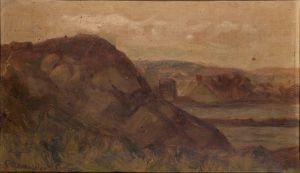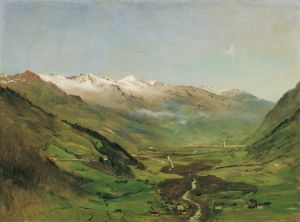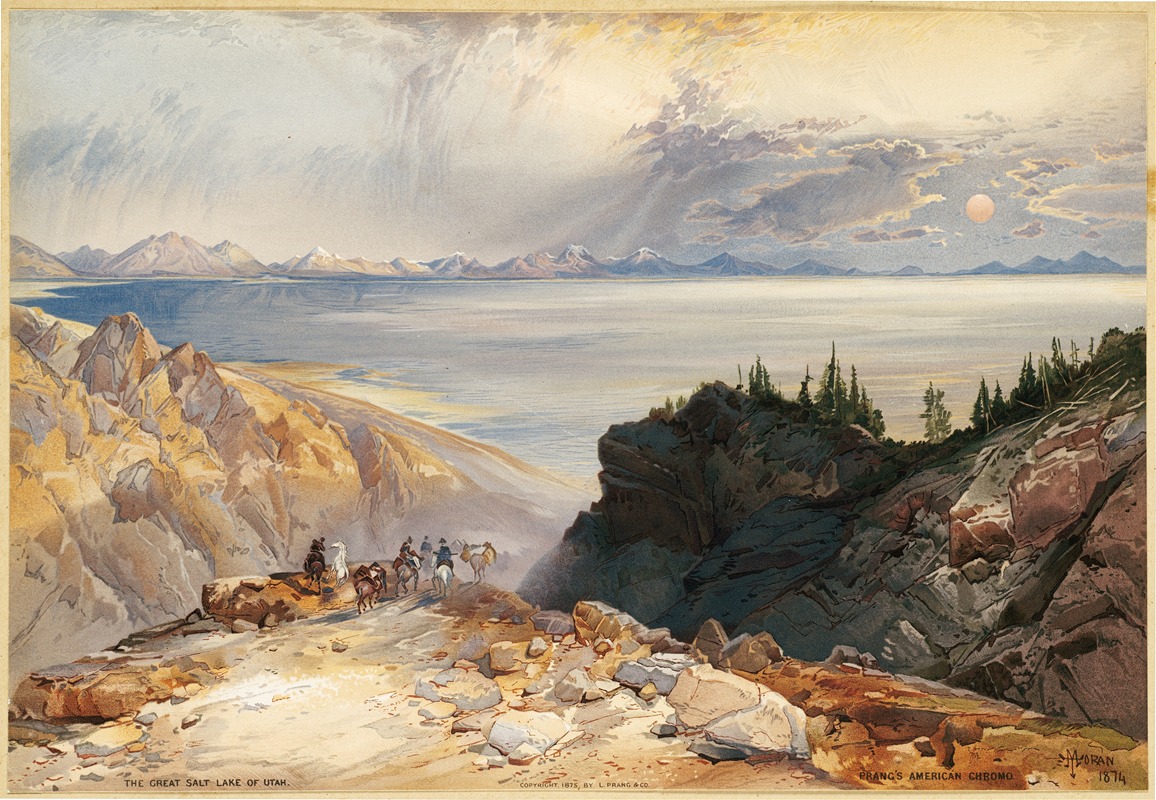
The Great Salt Lake of Utah
A hand-painted replica of Thomas Moran’s masterpiece The Great Salt Lake of Utah, meticulously crafted by professional artists to capture the true essence of the original. Each piece is created with museum-quality canvas and rare mineral pigments, carefully painted by experienced artists with delicate brushstrokes and rich, layered colors to perfectly recreate the texture of the original artwork. Unlike machine-printed reproductions, this hand-painted version brings the painting to life, infused with the artist’s emotions and skill in every stroke. Whether for personal collection or home decoration, it instantly elevates the artistic atmosphere of any space.
Thomas Moran's painting "The Great Salt Lake of Utah" is a notable work by the American artist, who is renowned for his depictions of the American West. Moran, born in 1837 in Bolton, England, immigrated to the United States with his family as a child. He became one of the leading figures of the Hudson River School, a mid-19th century American art movement characterized by its realistic and detailed portrayal of nature, often emphasizing the beauty of the American landscape.
"The Great Salt Lake of Utah" captures the vastness and unique beauty of the Great Salt Lake, which is one of the largest saltwater lakes in the Western Hemisphere. Located in the northern part of the U.S. state of Utah, the lake is a remnant of the prehistoric Lake Bonneville and is known for its high salinity and shallow waters. Moran's painting reflects his fascination with the dramatic landscapes of the American West, which he explored extensively during his career.
Moran's journey to the American West was significantly influenced by his participation in the Hayden Geological Survey of 1871, which explored the Yellowstone region. This expedition not only inspired his famous works of Yellowstone but also fueled his interest in other western landscapes, including the Great Salt Lake. Although the exact date of the painting "The Great Salt Lake of Utah" is not specified, Moran's western expeditions during the late 19th century provided him with ample material and inspiration for his art.
In his depiction of the Great Salt Lake, Moran employs his signature style, characterized by vivid colors and dramatic lighting, to convey the serene yet majestic quality of the landscape. The painting likely features the expansive water body set against the backdrop of the surrounding mountains, capturing the interplay of light and shadow that Moran skillfully used to enhance the natural beauty of his subjects. His work often emphasized the sublime aspects of nature, inviting viewers to appreciate the grandeur and vastness of the American wilderness.
Moran's paintings, including "The Great Salt Lake of Utah," played a significant role in shaping public perception of the American West during the 19th century. His works were instrumental in promoting the idea of preserving these natural landscapes, contributing to the establishment of national parks in the United States. Through his art, Moran not only documented the physical characteristics of these regions but also captured their emotional and spiritual essence, leaving a lasting legacy in the world of American art.
Today, Thomas Moran is celebrated as one of the foremost landscape painters of his time, and his works continue to be admired for their artistic and historical significance. "The Great Salt Lake of Utah" stands as a testament to Moran's skill in capturing the beauty and majesty of the American landscape, reflecting both the artist's personal vision and the broader cultural appreciation for the natural wonders of the United States.





